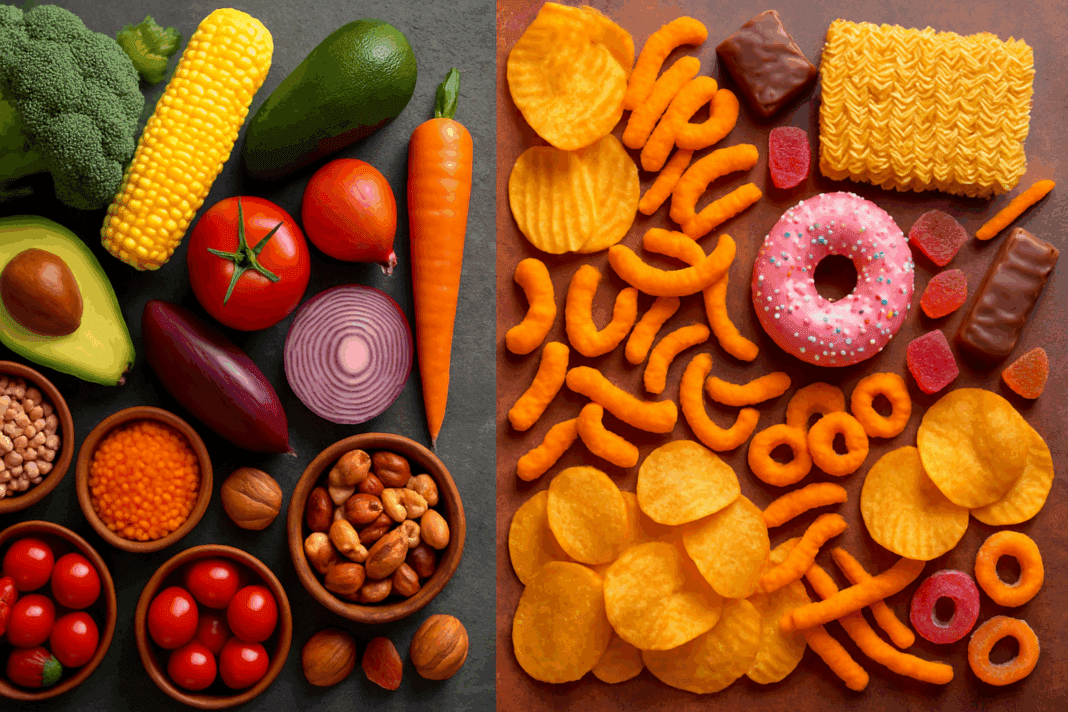Understanding the Landscape of Food Processing: Why It Matters More Than Ever
In today’s food environment, making smart dietary choices goes beyond counting calories or choosing low-fat options. It increasingly involves understanding what goes into our food and how it’s made. This is where the conversation around minimally processed foods versus ultra-processed alternatives becomes not just relevant but essential to long-term health. With chronic disease rates climbing and global obesity a growing concern, knowing the difference between various levels of food processing can have a measurable impact on both individual wellness and public health outcomes.
Food processing exists on a broad spectrum, ranging from basic cleaning and cutting to industrial-level alterations that change the very nature of a food. While all processed foods are not inherently unhealthy, the degree and type of processing can determine whether the final product supports or undermines your health. What many don’t realize is that the divide between processed foods vs unprocessed foods isn’t just a technical classification—it often reflects nutritional value, biological impact, and the likelihood of overconsumption. By looking more deeply into how food is altered from its original form, we can begin to make decisions that support energy, disease prevention, and vitality in daily life.
You may also like: How a Whole Foods Diet Supports Sustainable Weight Loss: Expert Tips for Eating Whole Foods to Lose Weight Safely
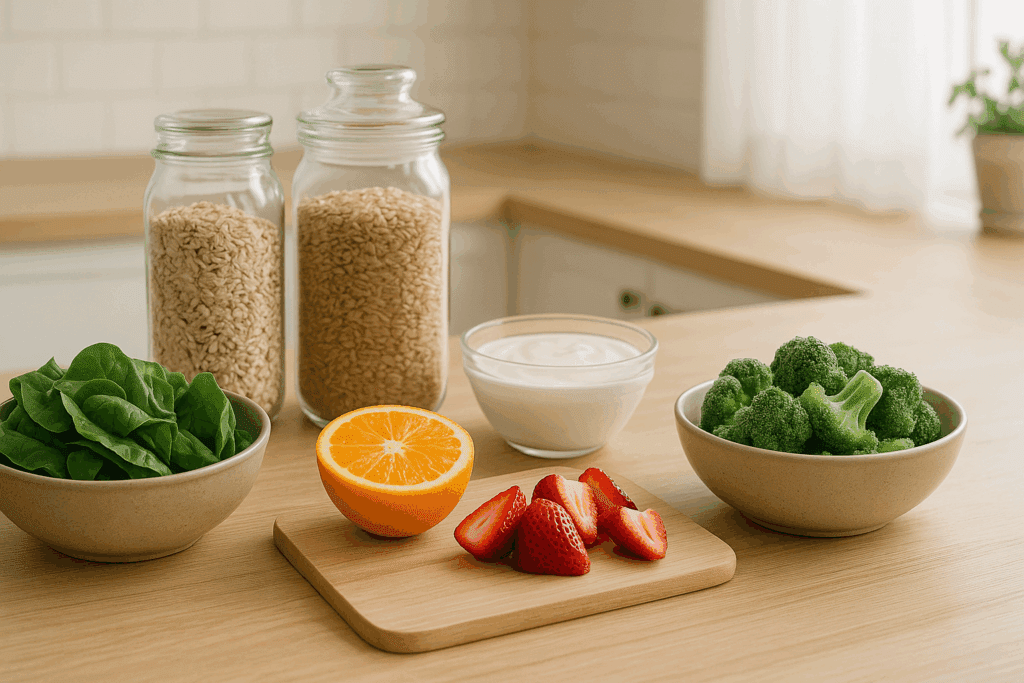
What Are Minimally Processed Foods? A Return to Simplicity
At its core, a minimally processed food is one that has undergone limited alteration from its natural state. These foods may be washed, chopped, frozen, or vacuum-sealed for preservation, but they retain their original identity and nutrient density. Examples include plain frozen vegetables, fresh-cut fruit, whole grains, roasted nuts without additives, and plain yogurt. Unlike their highly processed counterparts, these items are typically free from artificial ingredients, chemical additives, and extensive mechanical manipulation.
Minimally processed foods offer a vital middle ground for modern eaters who want convenience without compromising on health. For instance, frozen spinach retains most of the nutritional profile of its fresh counterpart, and vacuum-sealed brown rice can cut cooking time while preserving fiber and antioxidants. These foods enable a more manageable transition for those shifting from fast food or prepackaged meals to a cleaner, whole-food diet. Moreover, by choosing these simpler options, consumers gain more control over added sugars, sodium, and unhealthy fats—three major culprits in diet-related diseases.
It’s important to emphasize that minimal processing does not mean no processing. It means the food’s integrity remains largely intact. The focus is on preserving, not transforming. This distinction is key when navigating the complex marketplace where flashy packaging and misleading health claims often camouflage poor nutritional quality. By anchoring your meals in minimally processed foods, you embrace a diet that is as close as possible to what nature intended—rich in essential vitamins, minerals, fiber, and bioactive compounds that fuel cellular function and protect against disease.
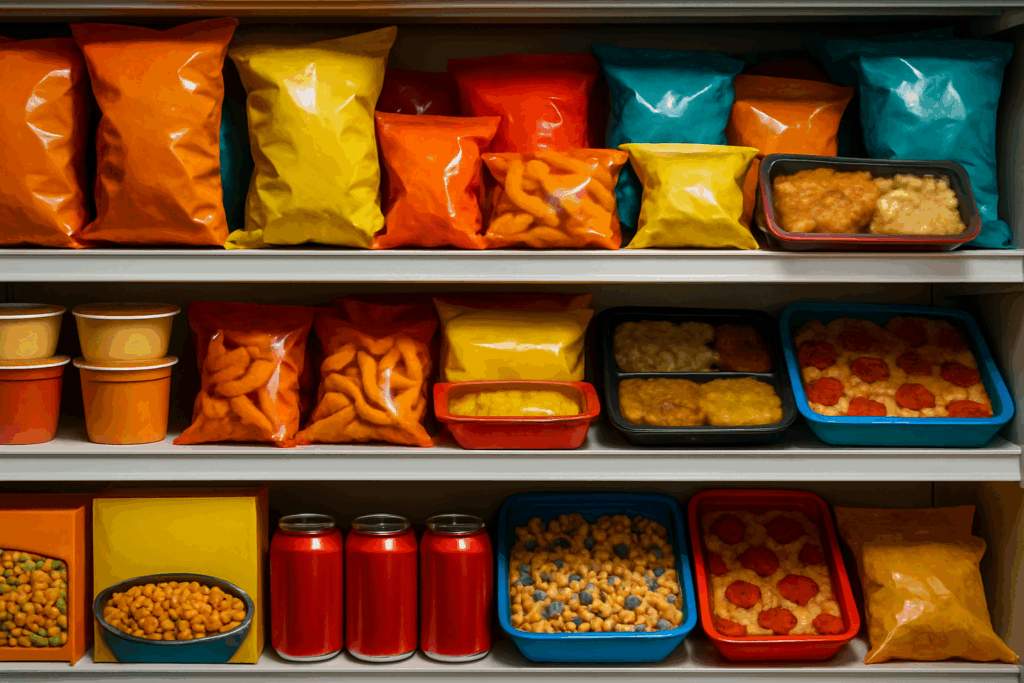
Defining Ultra-Processed Foods: What Makes Them So Harmful?
In contrast, ultra-processed foods are the product of extensive industrial formulations, often combining refined ingredients with artificial additives to create something far removed from its original source. These products typically contain little to no intact whole food and are designed for taste, shelf life, and convenience rather than nutrition. Common examples include sugary breakfast cereals, packaged snack cakes, soda, frozen pizza, instant noodles, and processed meats such as hot dogs or deli slices laden with preservatives.
The hallmark of ultra-processed foods is their reliance on ingredients not typically found in home kitchens: hydrogenated oils, color stabilizers, emulsifiers, flavor enhancers, and synthetic sweeteners, among others. These substances are added not for nutrition but for texture, color, taste consistency, and shelf stability. As a result, these foods are energy-dense, low in fiber, and high in sugars, saturated fats, and sodium—all factors that contribute to obesity, insulin resistance, cardiovascular disease, and various cancers when consumed in excess.
From a behavioral standpoint, ultra-processed foods are engineered to be hyper-palatable, meaning they bypass the body’s natural satiety signals and promote overeating. This makes them especially dangerous in a culture driven by instant gratification and busy lifestyles. In comparing processed foods vs unprocessed foods, it becomes clear that the problem lies not in the act of processing itself but in the end result. Ultra-processed options often hijack our brain’s reward systems, making it harder to resist them and easier to consume large quantities without nutritional satisfaction.
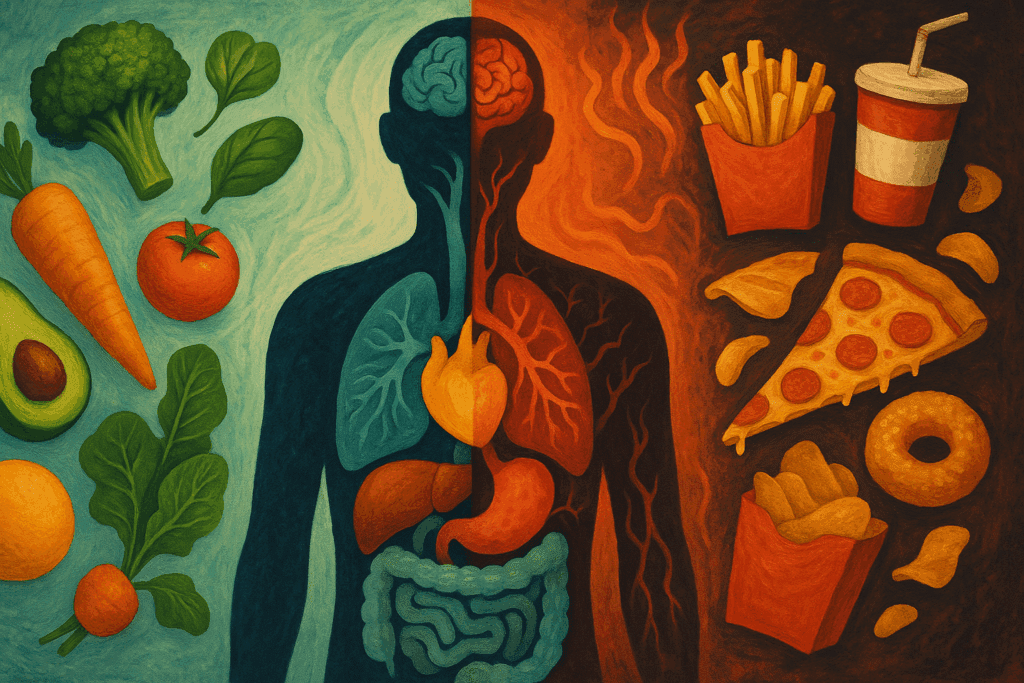
The Science Behind Food Processing and Chronic Disease
Emerging research consistently links high intake of ultra-processed foods with an increased risk of numerous chronic conditions. A 2019 study published in The BMJ found a direct correlation between ultra-processed food consumption and the risk of cardiovascular disease. Another major study in JAMA Internal Medicine identified a significant association between ultra-processed food intake and overall mortality. The mechanisms behind these outcomes include inflammation, oxidative stress, insulin dysregulation, and disruption of the gut microbiome.
In contrast, diets rich in minimally processed foods tend to support anti-inflammatory pathways, stable blood sugar levels, and microbiome diversity. Whole grains, legumes, leafy greens, and lean proteins—especially in their least altered forms—have been shown to reduce markers of inflammation and improve metabolic health. This is not just about individual ingredients; it’s about the whole food matrix, which includes fiber, phytochemicals, and naturally occurring enzymes that support digestion and nutrient absorption.
What’s critical to understand here is that food is more than the sum of its parts. A piece of fruit offers more than just vitamin C—it delivers fiber, water, and a spectrum of phytonutrients that work synergistically. When foods are ultra-processed, these benefits are stripped away or replaced with synthetic substitutes that lack the same biological impact. Understanding the nuance in processed foods vs unprocessed foods helps us choose items that nourish rather than deplete.
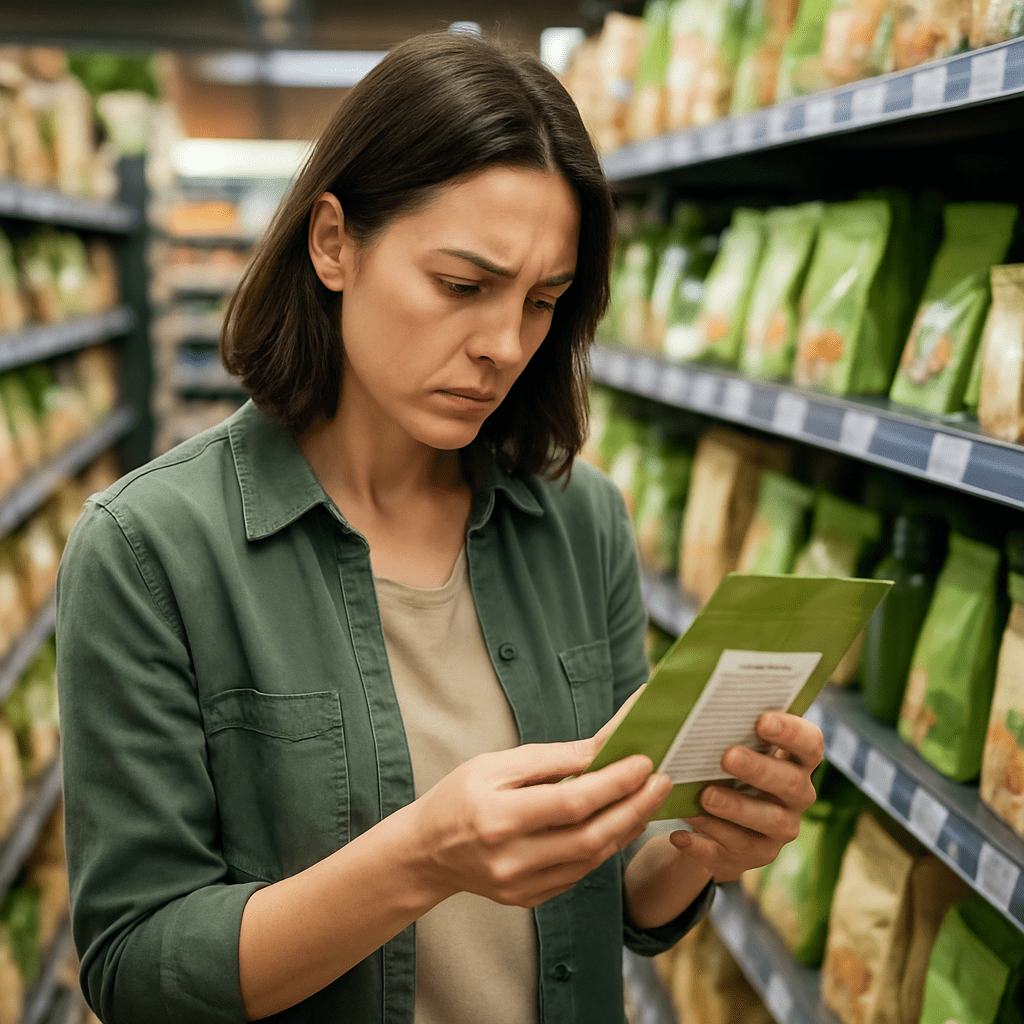
Food Labels and Marketing: Navigating the Confusion
One of the greatest challenges for health-conscious consumers is deciphering food labels and marketing language. Terms like “natural,” “low-fat,” “high protein,” or “gluten-free” can often be misleading, especially when applied to ultra-processed products. A protein bar that boasts 20 grams of protein but is also full of artificial sweeteners, soy isolate, and emulsifiers is not equivalent to a serving of grilled chicken or a boiled egg.
This is where understanding food processing categories becomes crucial. Instead of relying on front-of-package claims, it’s wiser to read ingredient lists and identify the degree of processing involved. As a rule of thumb, the shorter and more recognizable the ingredient list, the closer the food is to being minimally processed. Whole foods rarely need labels—an apple, for example, speaks for itself.
Recognizing the difference between minimally processed foods and ultra-processed options requires critical thinking and awareness. Even within the same food category, you can find wildly different options. Consider peanut butter: a minimally processed version contains peanuts and maybe a pinch of salt, while the ultra-processed alternative includes hydrogenated oils, added sugar, and emulsifiers. Empowering yourself with label literacy can make a profound difference in your long-term health.
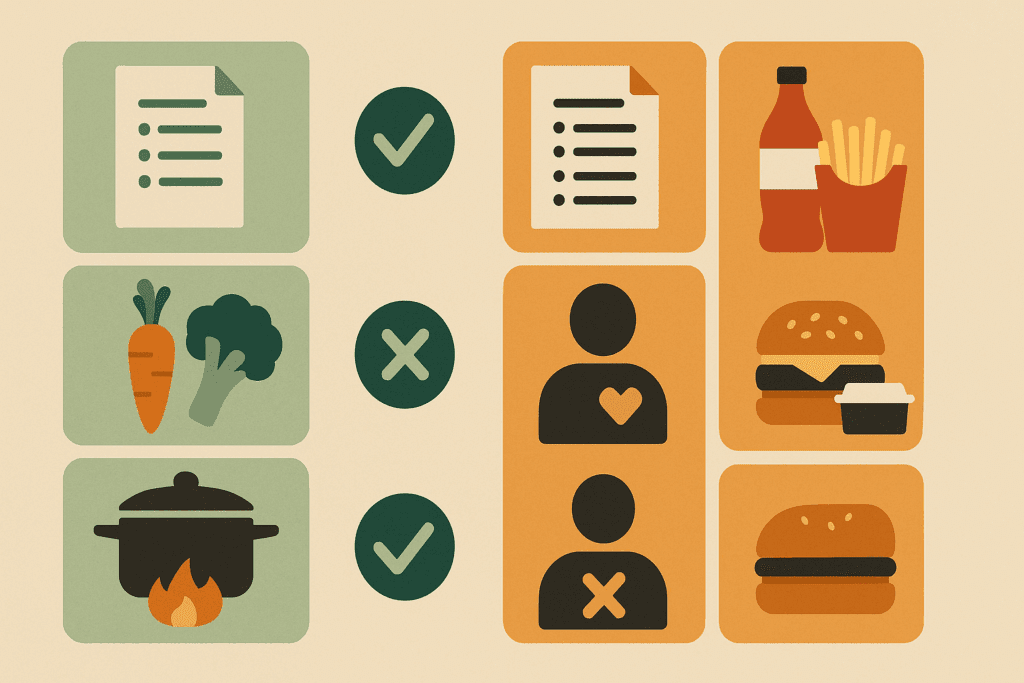
Processed Foods vs Unprocessed Foods: The Practical Implications
Shifting toward a diet rich in unprocessed or minimally processed options doesn’t mean giving up all convenience or flavor. It means recalibrating how we define “food” in our daily lives. This starts with planning meals around whole ingredients—vegetables, fruits, beans, grains, nuts, seeds, and lean meats—and using time-saving but health-preserving techniques like batch cooking, freezing, and slow cooking.
For many people, especially those with busy schedules or limited access to fresh produce, the idea of avoiding processed foods can feel overwhelming. This is why it’s essential to recognize that some processing can be helpful and even necessary. Canned beans, frozen broccoli, or pre-washed spinach all fall under the umbrella of minimally processed foods, and they offer practical solutions without compromising nutritional value.
What you’re really striving for is a lifestyle where whole ingredients form the backbone of your meals. When you compare processed foods vs unprocessed foods from a functional standpoint, the latter clearly support energy balance, mental clarity, and physical resilience. You’re less likely to crash midday, more likely to maintain a healthy weight, and far less vulnerable to metabolic disruptions that accompany the modern Western diet.
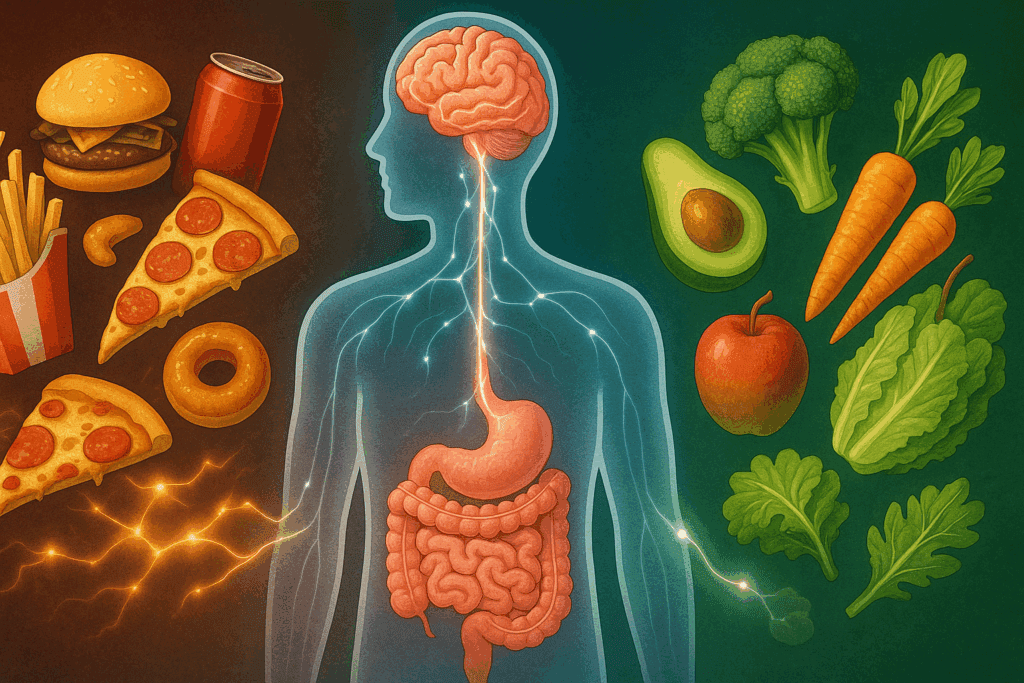
Understanding the Impact of Ultra-Processing on the Gut and Brain
While much of the conversation around food processing focuses on physical health, the neurological and gastrointestinal consequences are equally profound. Ultra-processed foods often contain ingredients that disrupt the gut-brain axis, the bi-directional communication network between your digestive system and central nervous system. Artificial sweeteners, for example, may negatively alter gut bacteria, which can influence mood, memory, and immune function.
Moreover, the additives in ultra-processed foods—especially flavor enhancers like monosodium glutamate (MSG), phosphates, and high-fructose corn syrup—can contribute to neuroinflammation, fatigue, and reduced cognitive performance. These effects may not be immediately noticeable, but over time, they accumulate and can influence long-term mental health. Conversely, diets high in fiber-rich minimally processed foods tend to promote a healthy microbiome, which supports serotonin production, reduces anxiety, and improves focus.
This growing area of research highlights yet another reason to prioritize unprocessed or lightly processed foods. The connection between food and mood is not merely anecdotal; it is a biologically grounded reality that underscores the wisdom of returning to simpler, more natural dietary habits.
Sustainability and Food Processing: A Broader Perspective
Beyond personal health, the level of food processing has environmental and ethical implications. Ultra-processed foods tend to rely on monoculture crops like corn, soy, and wheat, which require intensive chemical inputs and contribute to soil degradation. Their packaging, transportation, and energy usage also generate more waste and carbon emissions than fresh, whole alternatives.
Choosing minimally processed foods often aligns with more sustainable agricultural practices. Local produce, whole grains, and bulk goods typically have a smaller environmental footprint. They also support food systems that prioritize biodiversity, soil health, and community resilience. By reducing demand for highly processed goods, consumers can drive systemic change that benefits not only their health but also the planet’s future.
The distinction between processed foods vs unprocessed foods is therefore not only a nutritional concern but a sustainability issue. Every grocery store decision is an opportunity to vote for cleaner food systems, reduced environmental harm, and a healthier ecosystem. This alignment between health and environmental ethics is a compelling motivator for more mindful consumption.
Making the Transition: Practical Tips for Healthier Choices
Transitioning from a diet centered on ultra-processed convenience to one rooted in whole, minimally processed ingredients doesn’t require a complete overhaul overnight. Start by gradually replacing ultra-processed snacks with fresh fruit, nuts, or simple yogurt. Swap boxed pasta sauces with homemade versions made from canned tomatoes, olive oil, and herbs. Choose oats over sugary breakfast cereals and add your own cinnamon or fresh berries for flavor.
Meal planning is a powerful tool in this shift. Preparing meals in advance, keeping healthy staples on hand, and learning basic cooking techniques can transform the way you eat. Embrace tools like slow cookers, blenders, and steamers to simplify the preparation of whole foods. Involve family or roommates in the process, turning cooking into a shared experience rather than a chore.
The ultimate goal is not perfection but progress. A diet that emphasizes minimally processed foods most of the time is vastly better than one dominated by ultra-processed options. Every intentional choice contributes to better energy, sharper thinking, stronger immunity, and deeper satisfaction in the foods you consume.
Frequently Asked Questions: Smart Choices Between Minimally Processed Foods and Ultra-Processed Alternatives
1. How can I spot the difference between a minimally processed food and a health-marketed ultra-processed food?
While packaging may portray a product as healthy, ingredients tell the real story. A key tip is to check whether the item has been altered in ways that change its natural form or include synthetic substances. Minimally processed foods typically have very short ingredient lists with familiar items—like “almonds” or “rolled oats”—without chemical additives or industrial compounds. On the other hand, a protein bar labeled as “natural” may still fall under ultra-processed if it contains sugar alcohols, artificial flavors, or protein isolates. Understanding this nuance helps clarify the debate around processed foods vs unprocessed foods, as many items marketed for wellness can actually be highly refined.
2. Are there cultural or regional dietary habits that naturally emphasize minimally processed foods?
Absolutely. Many traditional food cultures—including Mediterranean, Japanese, and certain Indigenous diets—center around minimally processed foods. These patterns favor meals made from whole grains, legumes, fresh vegetables, and unprocessed proteins, often prepared with simple cooking techniques. Interestingly, these eating styles not only support longevity and low disease risk but also foster stronger food literacy and intergenerational knowledge. In contrast, global dietary shifts toward Western-style eating have introduced ultra-processed options into regions that once thrived on whole-food diets. Examining these patterns deepens our understanding of processed foods vs unprocessed foods across both health and cultural dimensions.
3. Can a diet primarily based on minimally processed foods improve mental health outcomes?
Emerging evidence suggests that diets high in minimally processed foods may benefit mental health by reducing inflammation and improving gut-brain communication. Whole vegetables, nuts, seeds, and fermented foods support the microbiome, which influences neurotransmitter production and mood regulation. In contrast, ultra-processed foods can disrupt these pathways due to their pro-inflammatory properties and artificial additives. Studies have found associations between high consumption of processed meals and increased risks of depression and anxiety. So, when weighing processed foods vs unprocessed foods, mental health should be considered alongside physical health outcomes.
4. Is it realistic to eat mostly minimally processed foods with a busy schedule?
Yes, but it takes intention and strategy. Investing a small amount of time each week to prepare ingredients—like chopping vegetables or cooking whole grains—can make meals quicker and easier. Stocking your kitchen with staples such as canned beans, frozen vegetables, and plain yogurt provides flexibility while staying within the category of minimally processed foods. While ultra-processed convenience meals may seem faster, the long-term health trade-offs often aren’t worth the saved minutes. Making consistent, simple swaps is a sustainable way to shift from processed foods vs unprocessed foods even in the midst of a hectic lifestyle.
5. How do ultra-processed foods affect children’s health differently than adults?
Children’s developing bodies and brains are especially vulnerable to the negative effects of ultra-processed foods. Diets high in additives, synthetic dyes, and refined sugars can influence attention, sleep patterns, and even hormonal regulation. Unlike minimally processed foods, which provide whole nutrients critical for growth, ultra-processed snacks and meals often lack essential vitamins, healthy fats, and fiber. Long-term habits formed in childhood can persist into adulthood, making early exposure to these foods a concern for lifelong health. Recognizing this distinction reinforces the value in choosing unprocessed over processed foods for children whenever possible.
6. How does the cost of minimally processed foods compare to ultra-processed ones over time?
While ultra-processed options may seem cheaper upfront, especially in fast food or bulk snack formats, the long-term health costs can be substantial. Frequent consumption of these foods contributes to chronic disease, increasing healthcare expenses and lowering quality of life. Conversely, buying minimally processed foods in bulk—such as dried beans, brown rice, and seasonal produce—can reduce grocery costs and improve nutrient density. When evaluating processed foods vs unprocessed foods, it’s important to consider not just immediate spending but cumulative cost across health, productivity, and life expectancy.
7. What role does food addiction play in the preference for ultra-processed products?
Ultra-processed foods are often engineered to stimulate dopamine release in the brain, making them difficult to resist and easy to overconsume. This hyper-palatable quality contributes to patterns similar to addiction, where individuals crave and consume these products even when they’re not hungry. Minimally processed foods, on the other hand, are not designed to override natural hunger cues, allowing for better portion control and satisfaction. For many, breaking free from ultra-processed habits involves a psychological shift as much as a nutritional one. Understanding processed foods vs unprocessed foods through the lens of food addiction can help create more compassionate, effective health interventions.
8. Are there long-term environmental differences between minimally processed and ultra-processed food production?
Yes—significant ones. Ultra-processed foods typically rely on monocultures like corn and soy, which deplete soil health and demand intensive chemical use. Their production, packaging, and distribution create a larger carbon footprint compared to minimally processed foods, which often come from diversified, sustainable agricultural systems. Eating closer to the source, such as local vegetables or grains, supports environmental health as well as personal well-being. In weighing processed foods vs unprocessed foods, ecological impact adds an important dimension to food choice beyond nutrition alone.
9. How do social settings and peer influence affect food choices related to processing?
Social environments can strongly influence food preferences, particularly in group settings like school cafeterias, office meetings, or parties where ultra-processed snacks dominate. Peer behavior can normalize or even reward frequent consumption of convenience foods. However, when minimally processed foods are introduced in shared spaces—such as potlucks with fruit salads, roasted veggies, or whole grain dishes—norms begin to shift. Creating a supportive food culture at home or within a community can encourage healthier patterns that favor unprocessed over processed foods without sacrificing enjoyment.
10. What does the future hold for reducing reliance on ultra-processed foods in mainstream diets?
There’s growing momentum among policymakers, healthcare providers, and consumers to address the risks posed by ultra-processed foods. Some countries are exploring warning labels, taxes on sugary snacks, and subsidies for minimally processed foods like fresh produce and legumes. Additionally, innovative startups are working to create convenient, affordable meals using whole ingredients and fewer synthetic additives. Education campaigns are also empowering people to make better-informed decisions about processed foods vs unprocessed foods, shifting the food industry’s priorities toward transparency and health. The challenge will be balancing scalability, affordability, and accessibility as society moves toward a more whole-food-centered approach.
Conclusion: Choosing Health with Every Bite—The Case for Minimally Processed Foods
In a world overflowing with dietary advice, fads, and conflicting messages, one principle holds true across cultures, health systems, and scientific disciplines: whole foods are best. Understanding the difference between processed foods vs unprocessed foods empowers you to make daily decisions that nourish your body, support your mental clarity, and reduce your long-term disease risk. The path toward wellness is not paved with restriction or deprivation but with mindful, informed choices rooted in simplicity and authenticity.
By prioritizing minimally processed foods, you choose not just health but autonomy. You step away from food designed to manipulate your biology and move toward ingredients that respect it. Whether you’re navigating a health condition, pursuing greater energy, or simply seeking balance in a chaotic world, this dietary approach offers a steady foundation. Each meal becomes a vote—for your well-being, for sustainability, and for a food culture that honors real nourishment.
Let your plate be your guide. Let your choices speak for your values. And let each bite take you closer to the vibrant health you deserve.
Was this article helpful? Don’t let it stop with you. Share it right now with someone who needs to see it—whether it’s a friend, a colleague, or your whole network. And if staying ahead on this topic matters to you, subscribe to this publication for the most up-to-date information. You’ll get the latest insights delivered straight to you—no searching, no missing out.
Further Reading:
Healthy Food vs. Highly Processed Food: What to Know
How Ultra-Processed Foods Differ from Minimally Processed and Whole Foods
Disclaimer
The information contained in this article is provided for general informational purposes only and is not intended to serve as medical, legal, or professional advice. While NewsHealthWatch strives to present accurate, up-to-date, and reliable content, no warranty or guarantee, expressed or implied, is made regarding the completeness, accuracy, or adequacy of the information provided. Readers are strongly advised to seek the guidance of a qualified healthcare provider or other relevant professionals before acting on any information contained in this article. NewsHealthWatch, its authors, editors, and contributors expressly disclaim any liability for any damages, losses, or consequences arising directly or indirectly from the use, interpretation, or reliance on any information presented herein. The views and opinions expressed in this article are those of the author(s) and do not necessarily reflect the official policies or positions of NewsHealthWatch.

